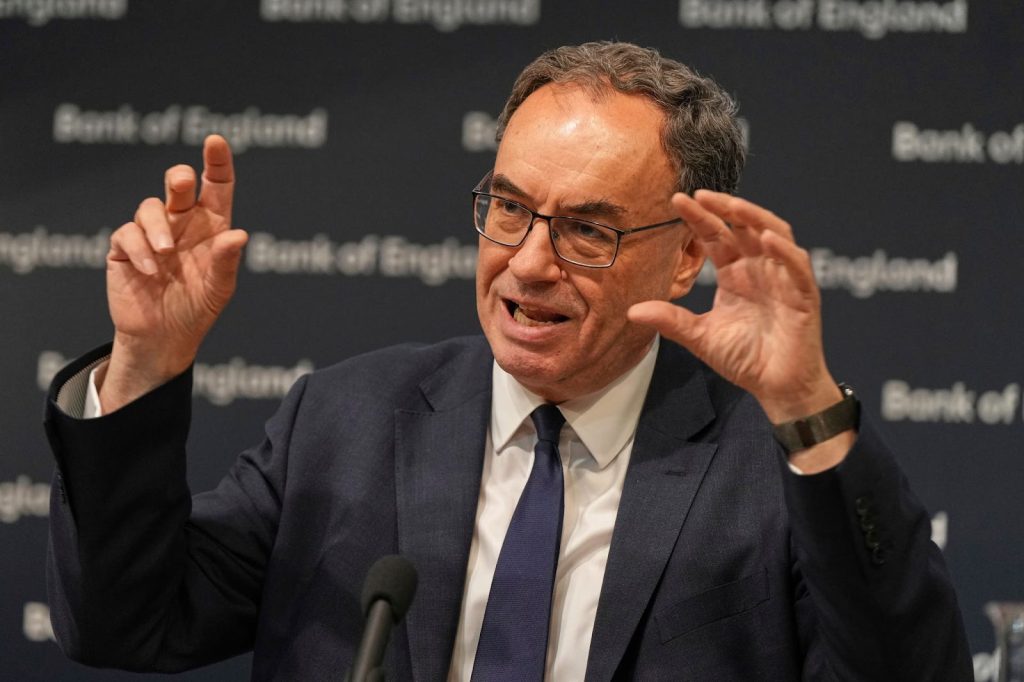Bank of England Governor Says Stablecoins Could Reduce UK Reliance on Commercial Banks – Could It?
Bank of England Governor Andrew Bailey has outlined plans to grant widely used stablecoins access to central bank accounts while warning the tokens could reshape Britain’s financial system.
According to a report from the Financial Times, Bailey described stablecoins as a technology that could separate money holding from credit provision, potentially reducing the role of commercial banks in the economy.
The governor believes that this shift would require careful management to preserve the link between money and credit creation that underpins economic activity.
His intervention coincides with the Bank of England’s preparation to publish a consultation paper on its systemic stablecoin regime, which will set standards for tokens used at scale for everyday payments or for settling tokenized financial markets.
 Andrew Bailey, Governor of the Bank of England (Source: Semafor)
Andrew Bailey, Governor of the Bank of England (Source: Semafor)
BoE Proposes Access to Central Bank Accounts Amid Deposit Drain Concerns
Bailey explained that Britain’s financial system currently combines money holding with credit provision through fractional reserve banking, where commercial bank deposits directly support lending to households and companies.
He noted that stablecoins could allow a different arrangement where money and credit provision are partially separated, with banks and stablecoins coexisting while non-banks carry out more lending activity.
The central bank has also proposed ownership limits of £10,000 to £20,000 for people and £10 million for businesses on systemic stablecoins.
Sasha Mills, the Bank’s executive director for financial market infrastructure, said the limits would “mitigate financial stability risks stemming from large and rapid outflows of deposits from the banking sector”.
Bailey particularly stressed that backing assets for stablecoins must be free of credit, interest, and exchange rate risk to ensure value stability, and must be accompanied by insurance schemes and statutory resolution arrangements similar to bank deposits.
He added that exchange terms must be known, consistent, and directly convertible into other forms of money rather than dependent on crypto exchanges and their business terms.
The governor acknowledged that the technology behind stablecoins is new but poses an old central banking question about ensuring the link between money and credit creation.
Crypto Industry Pushes Back Against the Proposed Stablecoin Cap
Tom Duff Gordon, vice-president of international policy at Coinbase, told the Financial Times that “imposing caps on stablecoins is bad for UK savers, bad for the City and bad for sterling” and that no other major jurisdiction has deemed caps necessary.
Similarly, Simon Jennings, executive director of the UK Cryptoasset Business Council, argued that “limits simply don’t work in practice” because stablecoin issuers cannot monitor token holders in real time.
He warned that enforcing caps would require costly new systems such as digital IDs or constant coordination between wallets.
Riccardo Tordera-Ricchi, director of policy at The Payments Association, also said, “just as there are no limits on cash, bank accounts, or e-money, there is no reason beyond scepticism to impose limits on stablecoin ownership”.
The criticism threatens to deepen tensions between the Bank of England and the Treasury after Chancellor Rachel Reeves committed in her Mansion House speech to “drive forward developments in blockchain technology, including tokenised securities and stablecoins.”
Given the ongoing criticism, the Bank of England has clarified that its proposed limits could be “transitional” as the financial system adjusts to the growth of digital money.
The global stablecoin market has grown to $298 billion and received a major boost after Congress passed the GENIUS Act in July, introducing a regulatory framework expected to embed stablecoins as a key part of the U.S. financial system.
Meanwhile, Coinbase has forecast that the stablecoin market could reach $1.2 trillion by 2028 and has recently published research titled “Beyond the Deposit Debate,” challenging the banking industry’s claims that stablecoins threaten traditional financial stability.
The exchange called the “deposit erosion” narrative a myth designed to protect banks’ $187 billion annual payment processing monopoly.
Coinbase argues that banks currently park $3.3 trillion in Federal Reserve reserves, earning $176 billion risk-free annually, rather than extending additional loans.
You May Also Like

Sonic Holders Accumulate Millions as Price Tests Key Levels

Coinbase Custody Set to Grow with Proposed OCC Charter
